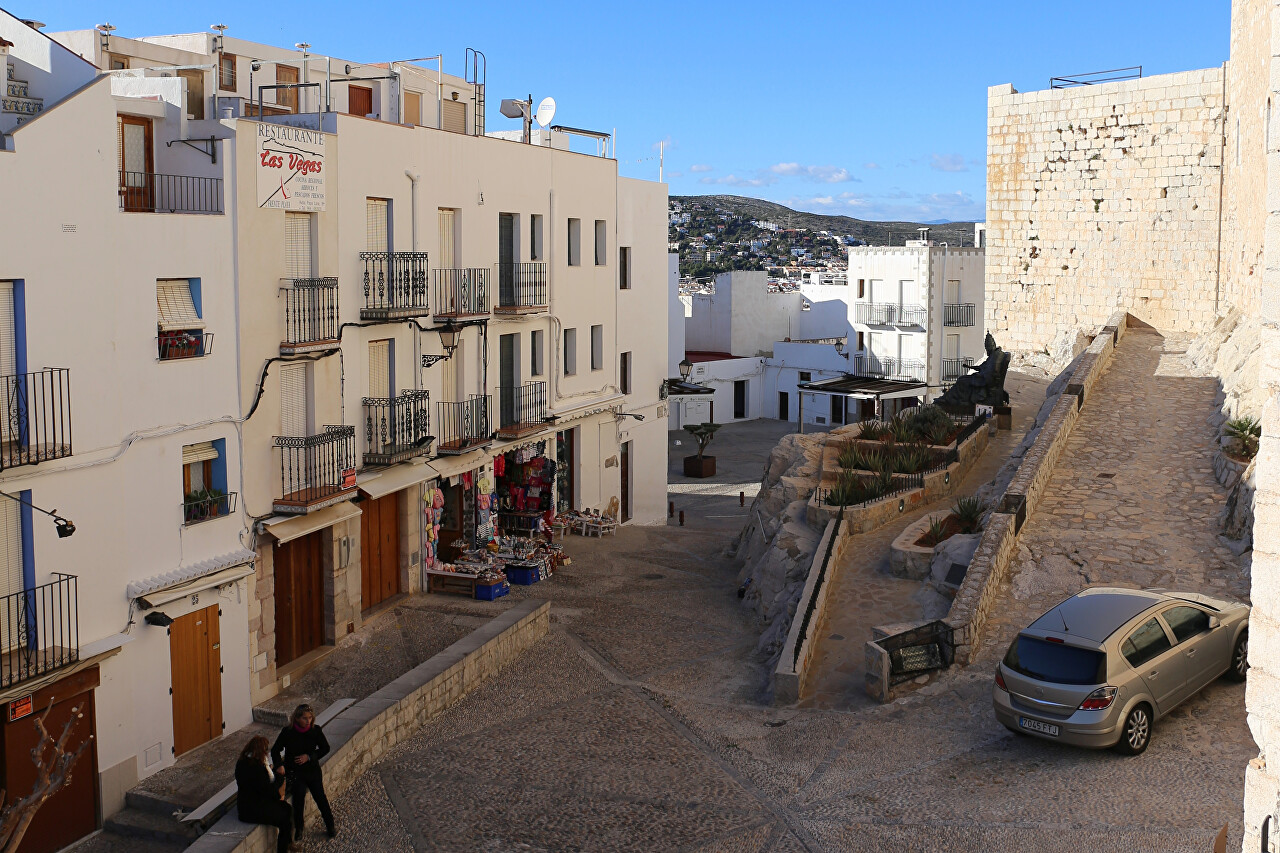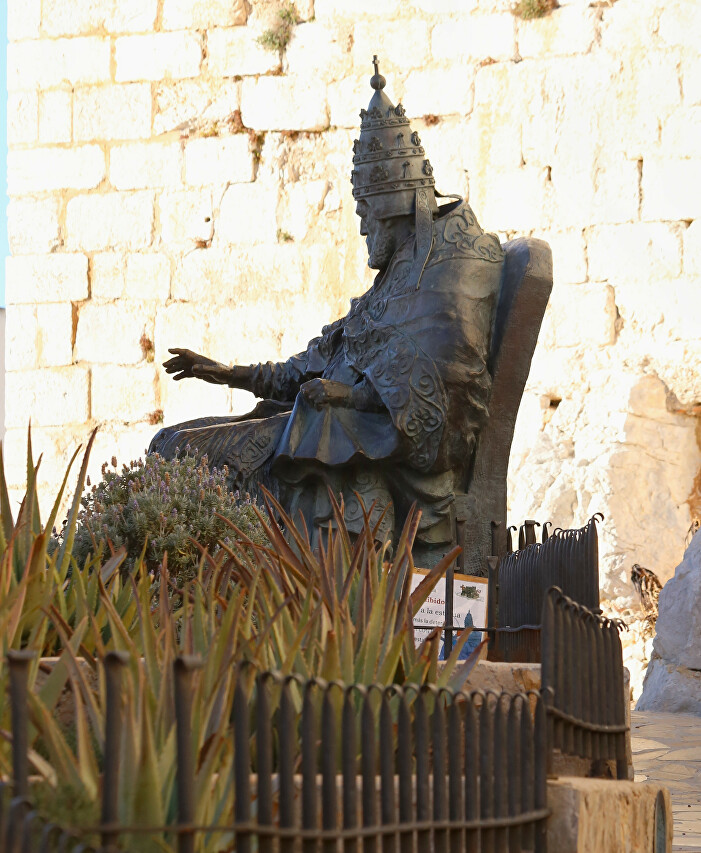Monument of Benedict XIII, Peñíscola
Under the castle walls, on the corner of Plaza de Armas, there is a monument to the infamous head of the Catholic Church, Benedict XIII, also called "Pope Luna" and "Anti-Pope". This patriarch spent the last years of his life in Peñiscola after his excommunication and exile, which is why this secluded castle became widely known.

Pedro Martinez de Luna was born in 1328 in the Aragonese castle of Illueca, in an aristocratic family that had its roots in the line of the kings of Navarre (Pamplona). In his youth, the future cardinal studied law and ecclesiastical law in France, at the University of Montpellier. In 1375, Pedro became a cardinal at the court of Pope Gregory XI in Avignon (from 1309 to 1377, the papal residence was located in Avignon, going down in history as the "Avignon period of the Popes").

After the death of Pope Gregory XI, there was a split among the higher clergy, due to disagreement with the policies of the newly elected Pope Urban VI. In the autumn of 1378, a significant part of the highest clergy gathered in the Italian city of Fondi, where they annulled the election of Urban VI and confirmed Clement VII as the head of the Catholic Church. The schismatics ' attempt to seize the Roman throne by force failed, after which an alternative papal administration was formed in Avignon, after which both Popes anathematized each other. Among the active rebels was Pedro de Luna, who took the place of Clement VII after his death in 1394. He began to call himself Pope Benedict XIII, his primacy was recognized by all the Iberian kingdoms, as well as Scotland, France and Sicily.

However, by the end of the 14th century, the French church turned towards Rome, and the Avignon residence was besieged by troops. The siege lasted five years, and ended with Benedict's flight to Aragon in 1403. All attempts to overcome the schism during the subsequent period were not crowned with success, the convocation of the Council of Pisa in 1409 only deepened the contradictions, in addition to Benedict, Gregory XII did not recognize the decisions of the council, also declaring himself the only legitimate Pope. A solution was found only in 1417 at the Council of Constance, when all the rebellious Popes voluntarily abandoned their claims. Only Benedict did not accept the decision of the Council, for which he was excommunicated from the church and took refuge in the Peñíscola castle, where he died in 1423.